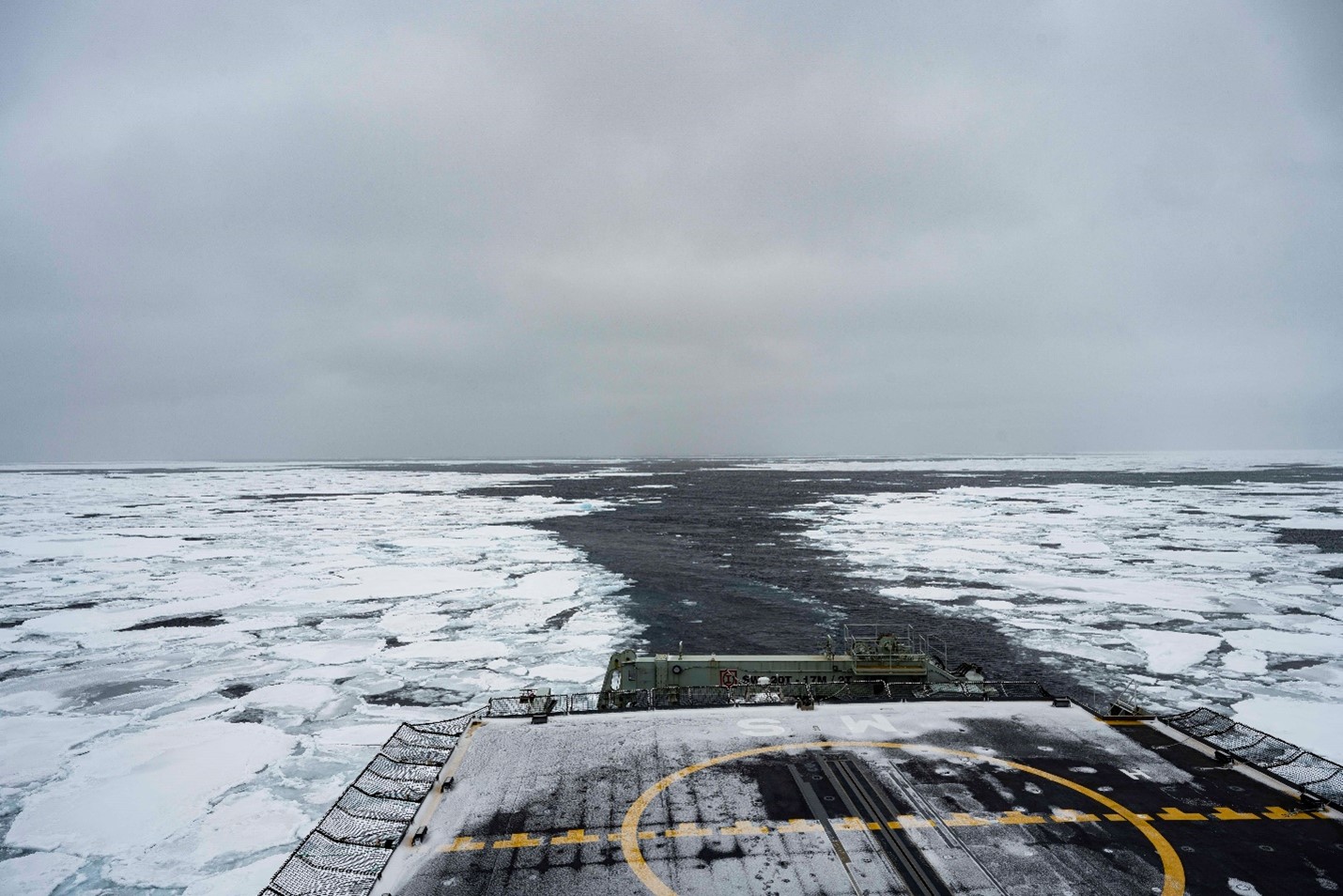HMCS Max Bernays pushes the RCN’s northern edge
September 19, 2025 - Royal Canadian Navy
By Sailor 1st Class Maxime Vandal

Caption
His Majesty’s Canadian Ship (HMCS) Max Bernays breaks through large sheets of ice during its transit through the Arctic Circle on August 27, 2025.
Photo: Sailor 1st Class Jordan Schilstra.

Caption
Map illustrating the distance sailed by HMCS Max Bernays during Operation LATITUDE.
His Majesty’s Canadian Ship (HMCS) Max Bernays has set a new milestone for the Royal Canadian Navy (RCN). On August 29, 2025, the ship’s company reached 81°12.044’ N, 155°38.512’ W, the farthest north any RCN ship has sailed. The crew departed Esquimalt on August 13 for a deployment that runs until December 19, beginning in the Western Arctic before continuing west to the Indo-Pacific. This northern sail forms part of Operation LATITUDE, Canada’s mission to enhance domain awareness in the Arctic and its approaches.
“The aim is clear: sustain a persistent Canadian presence across the region, understand what’s moving in, on and through our waters and airspace, while focusing on defending against potential and emerging threats,” said the Commanding Officer of Max Bernays. For more than a decade, HMCS Shawinigan held the RCN’s record for reaching the highest northern point at 80°28’ N on August 14, 2014. While other ships have since operated in the Arctic, none surpassed that benchmark. Today, Max Bernays has set the bar higher.
Reaching 81°12.044’ N demanded teamwork across every department. Bridge teams and lookouts adapted to the midnight sun and drifting sea ice illusions. Engineers worked tirelessly to keep water and heating systems from cracking under Arctic pressure. The deck department kept rescue equipment ready, handling lines that stiffened within minutes. Specialists analyzed imagery and weather, supported by an Ice Service Specialist from Environment Canada who advised on ice movement and composition. Together, the crew faced challenges found only at the edges of navigational charts, gaining insights that will help future Arctic patrols go farther and stay longer.
The significance of this milestone lies not only in the latitude reached, but in what it proves about the RCN’s modern Arctic toolkit. The Harry DeWolf-class Arctic and Offshore Patrol Vessels (AOPVs) were built to operate in harsh northern conditions. Equipped to carry multi-role rescue boats, vehicles, and a helicopter, they provide a flexible platform to assert Canadian sovereignty in Arctic and coastal waters while supporting operations at home and overseas.
For sailors, families, and Canada, the impact is clear. It expands where and how the Navy can safely operate. Completing a mission at 81° North boosts confidence in planning, logistics, and risk management for future Arctic deployments. It also strengthens ties with Northern and Indigenous partners through presence, community links, and practical support. Most importantly, it contributes directly to continental defence. The more consistently Canada can see, understand, and operate in the Arctic, the stronger our ability to detect, deter, and defend.
Operation LATITUDE will conclude with a short logistics stop in Dutch Harbour before Max Bernays shifts west to support Operation HORIZON in the Indo-Pacific and Operation NEON, which contributes to United Nations sanctions enforcement. This deployment—asserting Arctic sovereignty before turning to Pacific commitments—highlights the versatility of the AOPV class at home and abroad.
For now, the story is simple: one ship and one crew taking Canada’s Navy farther north than ever, proving what is possible today and building confidence for tomorrow’s Arctic missions.